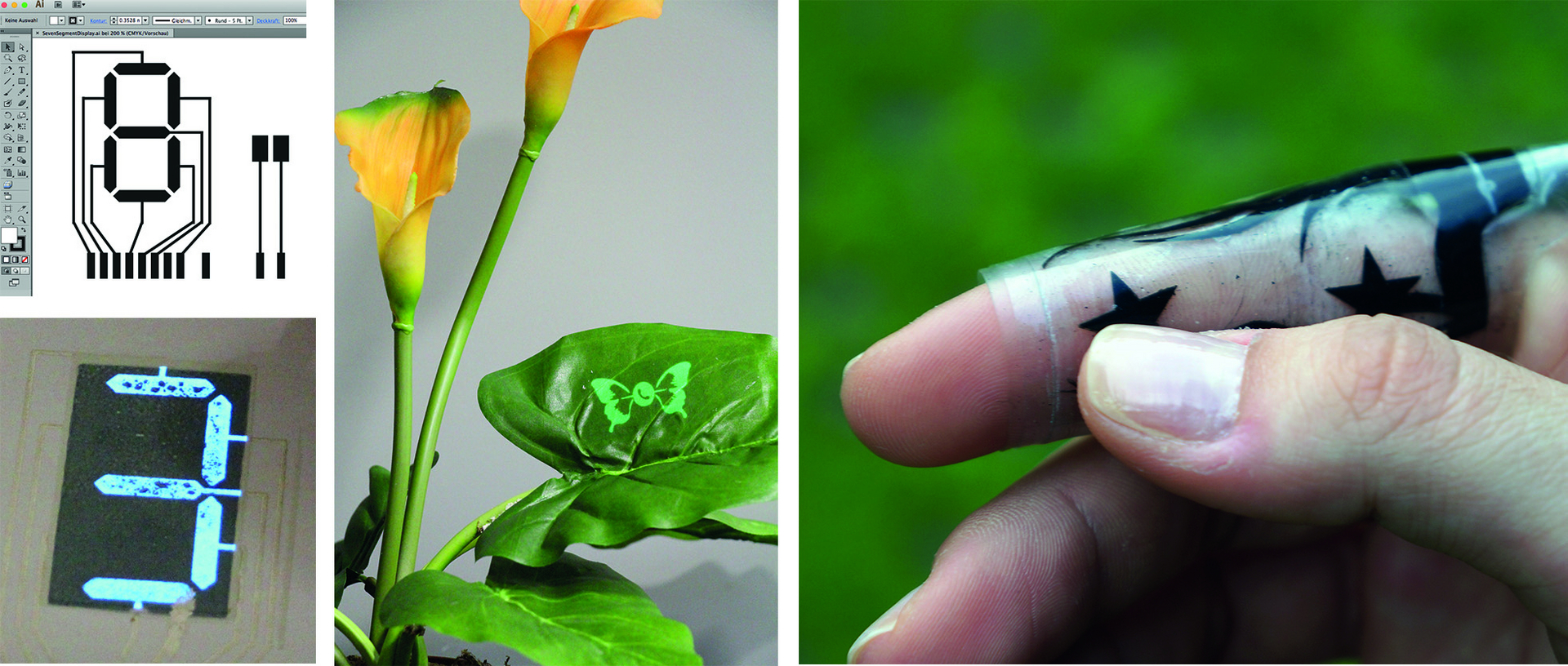Digital Fabrication of Flexible Displays and Touch Sensors
Jürgen Steimle
Digital Fabrication of Flexible Displays and Touch Sensors
Graphical user interfaces offer a high degree of customizability. Graphical contents can be digitally designed and programmed, in order to tailor to the user and to the context of use. In contrast, the screens, which display these graphical contents, barely offer any possibility for customization: today’s displays are typically rectangular, planar and rigid; they are relatively thick and available in only a few predefined sizes and aspect ratios.
This is getting increasingly problematic, as user interfaces of the third era of computing are increasingly embedded in the physical environment. User interfaces for the Internet of Things and for wearable computing must be customizable in size and shape to match the requirements of the physical context. Moreover, they need new properties, for instance, body-worn displays should be very thin, lightweight, and deformable.
We propose digital fabrication as a unique and novel approach to fabricating embedded user interfaces. Digital fabrication techniques, such as 3D printing and laser cutting, are already successful in commercial applications, for they enable the production of objects with highly custom shapes in industrial production quality. Our pioneering work allows us to go beyond static shape alone to realizing interactive input and output components through digital fabrication. This makes it possible to produce new types of embedded or wearable user interfaces in small quantities and in a fast, easy and inexpensive way.
Printed deformable touch-displays
With PrintScreen, we have contributed the first technique for digital fabrication of custom displays: Instead of buying a display off the shelf, one can now graphically design custom light-emitting and touch-sensitive displays in software, like designing conventional vector graphics. The display is then fabricated in a subsequent printing pass, similarly to printing a document.
This enables the fabrication of highly customized solutions in low volume, for instance, for prototypes and small-series products, personalized wearables, and interactive print products. The displays are around 0.1 mm thick, can be deformed, rolled, and even folded. Moreover, displays can be printed on various materials, including polymer films, paper, wood, ceramics, or leather. Only inexpensive commodity tools are required for their design and printing.
In follow-up research, we have developed PrintSense, a technique for printing sensor surfaces that capture additional modalities, including hovering and deformation. This enables single-pass printing of multi-modal interactive display surfaces.
Personalized touch-sensitive surfaces for on-skin user interfaces
For high usability on skin, sensor surfaces not only need to be thin, deformable, and customizable in shape, they must also be stretchable. With iSkin, we have contributed the first stretchable sensor surface for user interfaces on human skin. The sensor is graphically designed and then produced through digital fabrication techniques. The thin and mostly transparent sensor is made of fully biocompatible silicone. Not only the shape, size, and location of the touch-sensitive elements can be customized, but also their visual appearance, in order to tailor to the aesthetic demands of the user. This sensor enables various new types of on-body user interfaces. For instance, tattoo-like skin stickers enable the quick, direct, and discreet control of mobile computing devices.
Jürgen Steimle

DEPT. 4 Computer Graphics
Phone +49 681 302-71935
Email jsteimle mpi-inf.mpg.de

